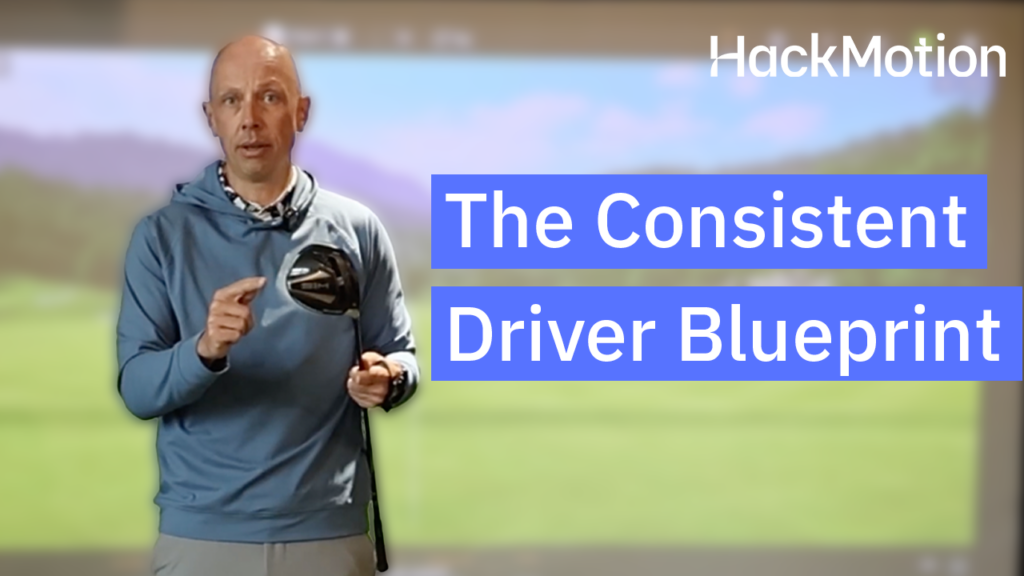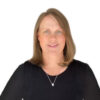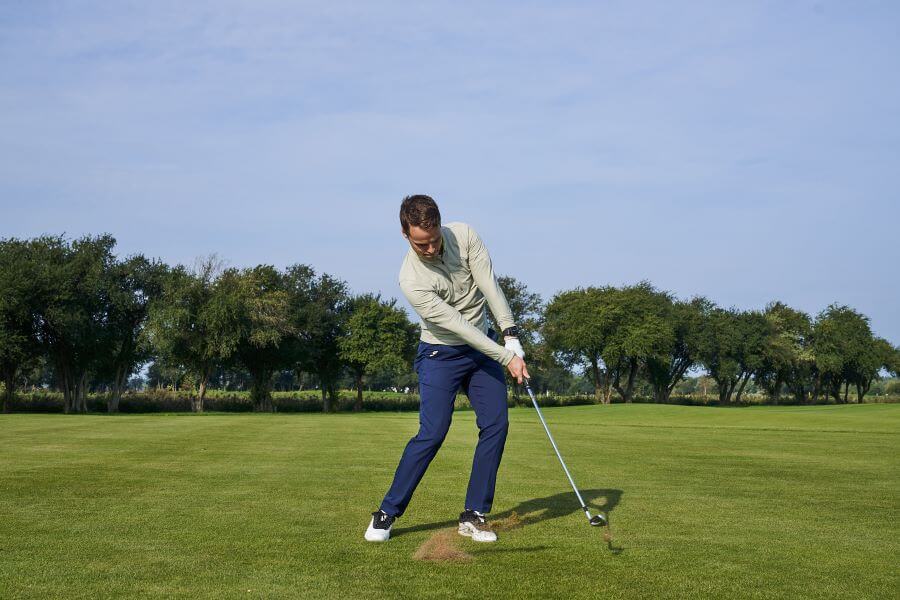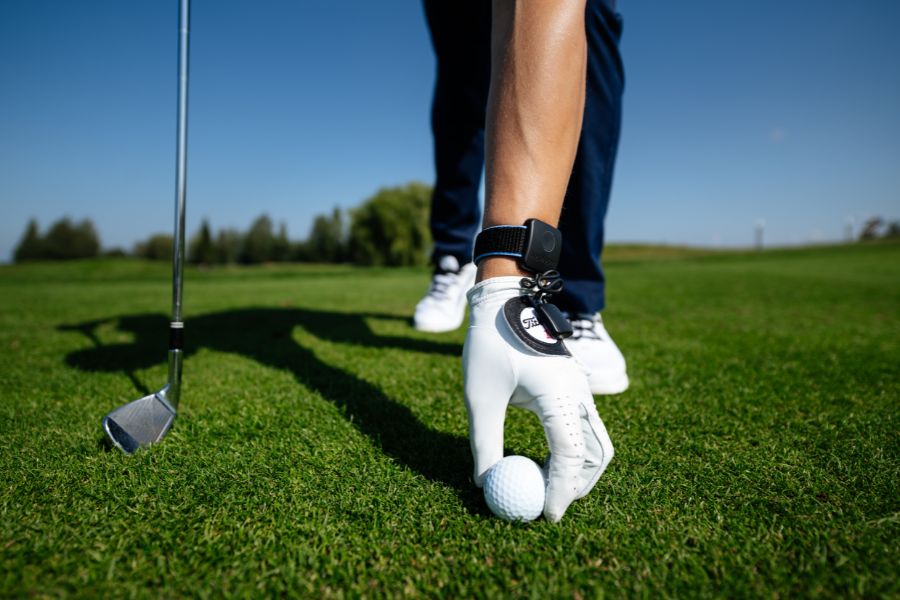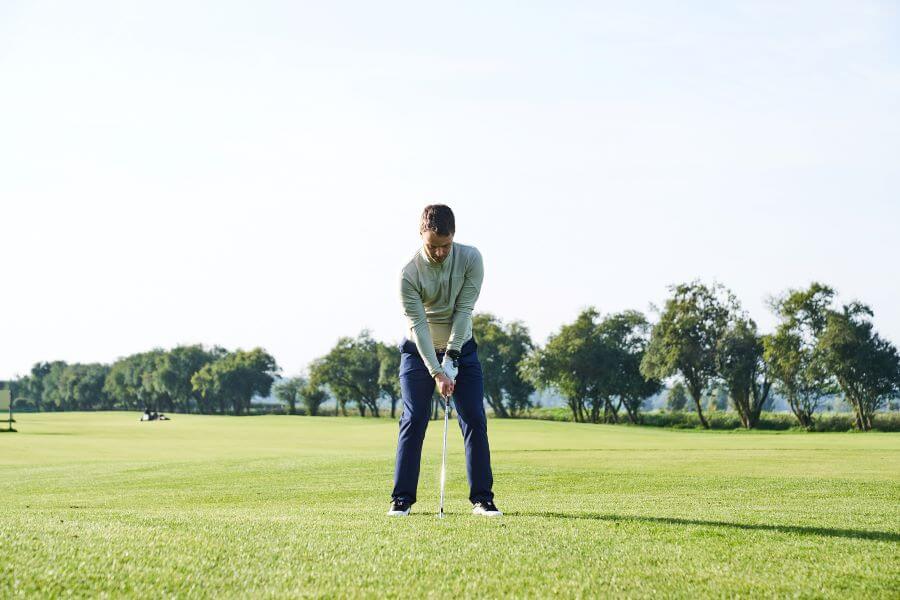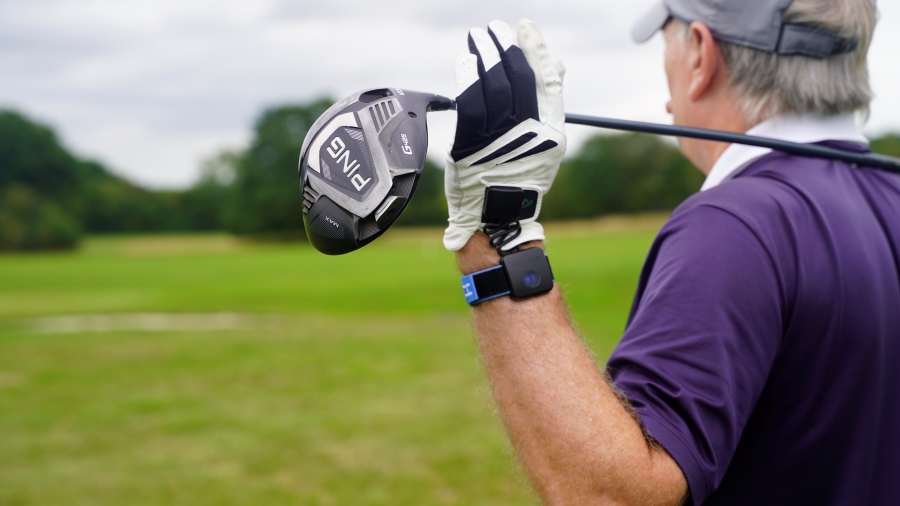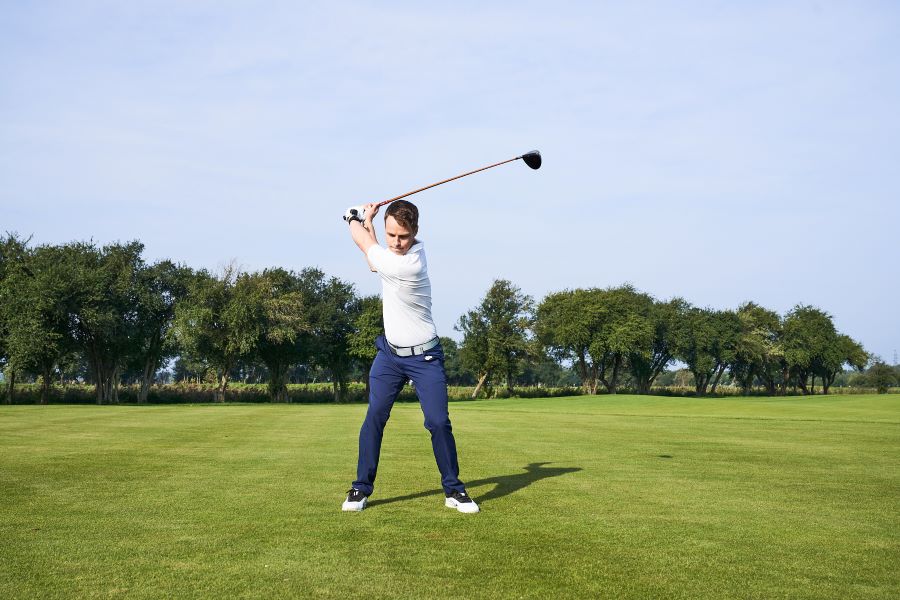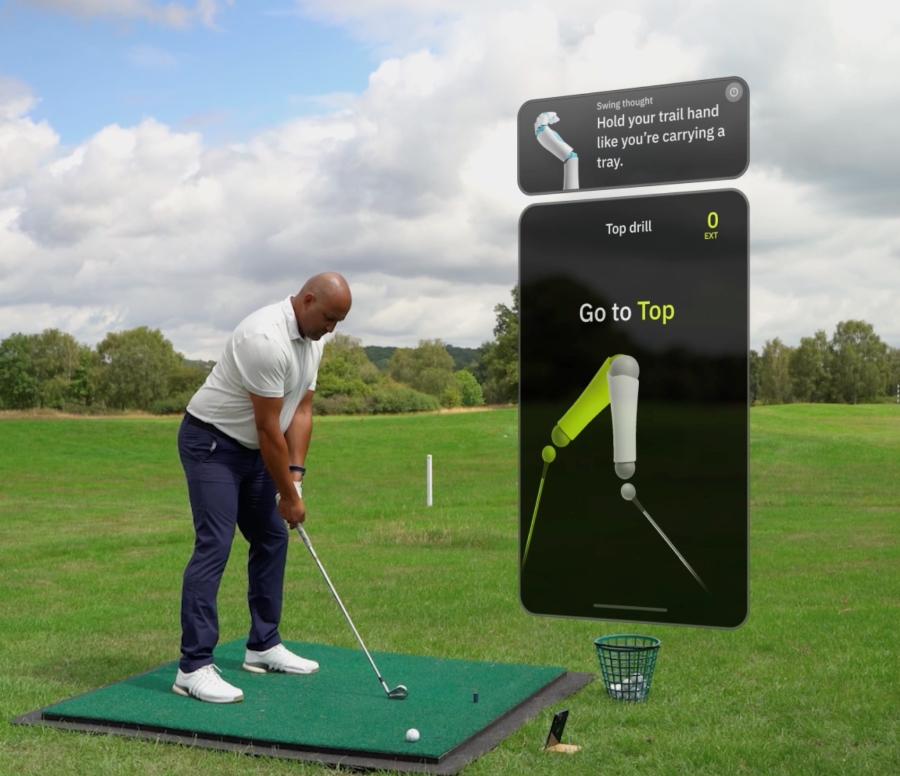Driver Grip vs. Iron Grip – Do They Have to Be Different?
The grip is the starting point of every golf shot. While most golfers use a similar grip for both the driver and irons, there are subtle differences worth understanding, especially as your game improves.
This guide breaks down the key differences between the driver grip and iron grip and shows how small adjustments can help you strike each club with greater precision.
There’s no need to relearn your grip from scratch. Knowing these positions can help you make small tweaks on the course that can help control the clubface.
Driver Grip vs. Iron Grip (Key Takeaways)
Looking for a quick answer on the differences between the driver grip vs. the iron grip? Here are things you need to know.
- The iron and driver grip are mostly similar, but there are differences in wrist position, grip pressure, and grip strength.
- When comparing the driver grip vs iron grip, it’s important to look at your current shot shape and the shot shape you are trying to achieve.
- Some golfers will use the same grip on their driver and iron swing, and that is acceptable.
- Use the HackMotion to ensure consistency in wrist and hand position during the setup.
Contents
- Driver Grip Overview
- Iron Grip Overview
- Driver vs. Iron Grip: Key Differences
- Types of Grips and Grip Positions
- The Differences Between Driver Grip vs. Iron Grip
- How Does Wrist and Hand Position Play Into Driver Grip vs Iron Grip?
- Which Grip is Best for a Driver?
- Which Grip is Best for Irons?
- Final Thoughts
Driver Grip Overview
The driver is the longest club in the bag, which makes it harder to square at impact. Your grip needs to support both clubface control and an effective release.
Unlike irons, the driver makes contact on the upswing, so your grip and hand position directly influence launch and direction.
- Use lighter grip pressure to promote a full release through impact.
- Ensure hand positioning allows the face to square naturally.
- Remember that impact occurs on the upswing, so avoid forcing a downward strike.
Iron Grip Overview
Iron shots require a different approach than the driver. Since you’re striking the ball on a descending angle, your grip must support both control and a downward strike.
A neutral grip with the right amount of pressure helps deliver a square face and proper shaft lean at impact.
- Ensure hands return slightly ahead of the ball at impact to create a descending blow.
- Maintain moderate grip pressure firm enough for control, but not tense.
- Use a neutral hand position to allow natural rotation and clean contact.
Driver vs. Iron Grip: Key Differences
The grip may look similar from club to club, but small changes in pressure, wrist position, and hand placement can make a big difference in performance.
For most golfers, the driver grip is slightly adjusted to support an upward strike and higher speed, while the iron grip is built for control and compression.
| Grip Element | Driver | Iron |
|---|---|---|
| Pressure | Slightly lighter for better release | Moderate for control and consistency |
| Strength | Often slightly stronger to reduce slicing | Neutral for clean contact |
| Wrist Setup | Neutral with minimal forward press | Slight forward press for downward strike |
| Impact Position | Hands even with or just behind the ball | Hands slightly ahead of the ball |
| Clubface Focus | Launch and release | Compression and face control |
Types of Grips and Grip Positions
As I go through the differences between driver grip vs. iron grip, here are some of the types of grips and grip positions that you should be aware of.
Interlock
Interlock grips are the most common for golfers with small hands that need a little extra help getting a secure connection with the club. With an interlock grip, the forefinger on the lead hand connects with the pinky finger on the trail hand.
Interlocking helps with strength, control, and speed. Be aware of added grip pressure because of that tight hold between the forefinger and the pinky.
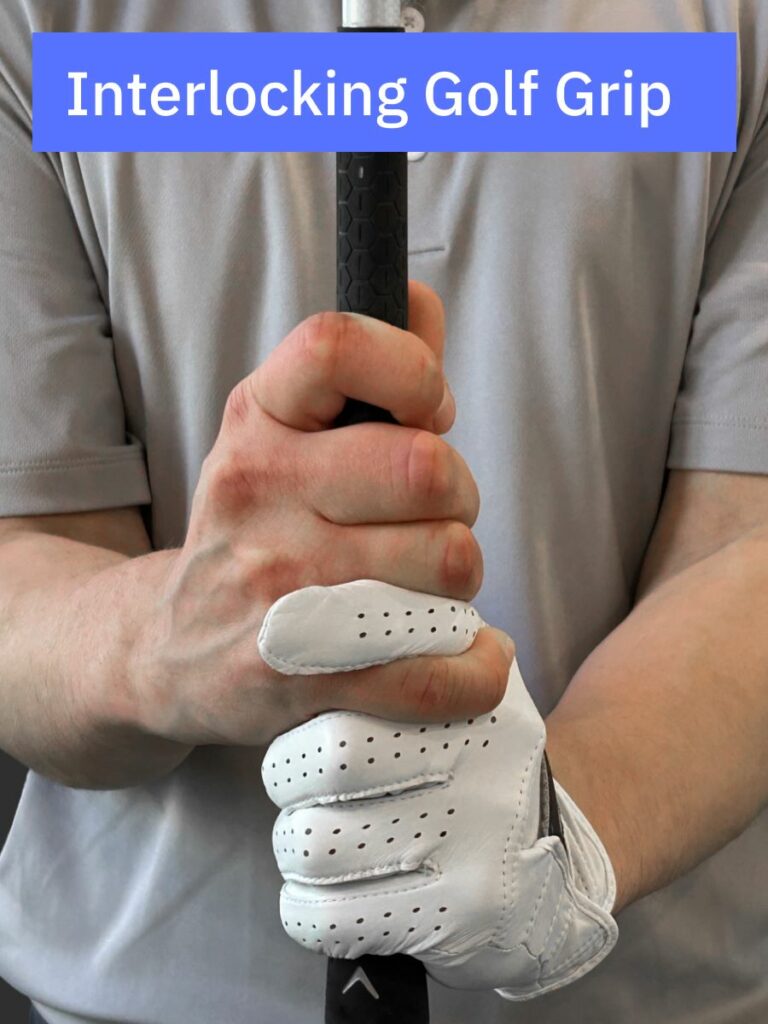
Overlap
The overlap grip is a great solution for improved grip pressure, and some players believe the overlap increases feedback and feel in a golf swing.
For this grip, the pinky finger on the trail hand rests on top of the forefinger of the lead hand.
Overlapping has the most benefit for a golfer with a larger hand and players that are trying to improve the overall feel they have with their golf shots.
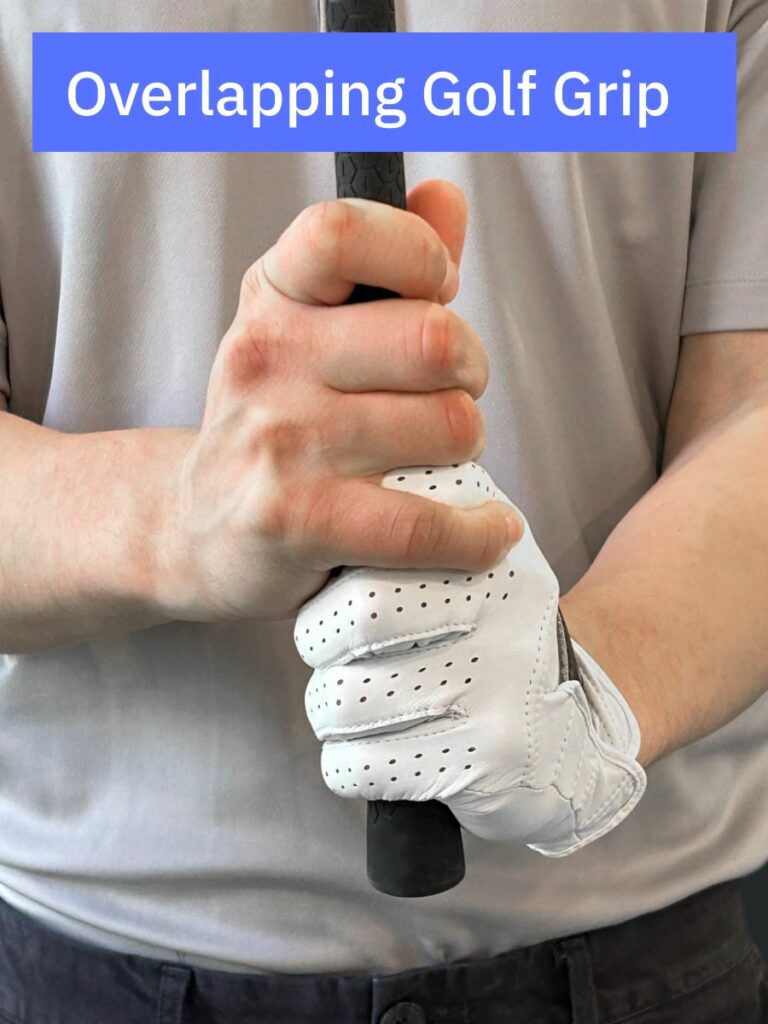
10 Finger
The 10 finger grip is often called a beginners grip. Golfers use the 10 finger when they first learn the game because it is the easiest to learn. The 10 finger grip makes it easy to find a neutral position; your hands will not interlock or overlap on the back of the golf club.
With a 10 finger grip, expect that your hands will be a little more active in your swing, and you have to be aware that they don’t create too much wrist action when they should.
The 10 finger grip is a good way to start in the game, but switch to the interlock and overlap when you can.
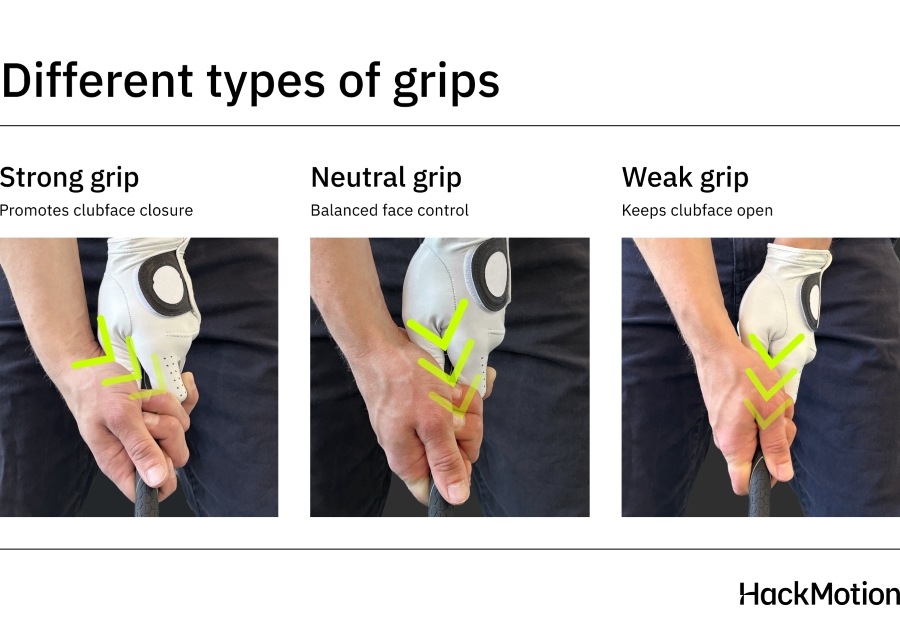
Strong
A strong grip is one where the left hand is turned a little to the right, and because of that, the right hand ends up a little under the club. The strong grip is a great solution for golfers that need to correct a slice.
Weak
A weaker grip is where the left hand (or lead hand) is turned a little to the left. The left hand turn allows the right hand to be positioned slightly more on top of the golf club. The weak position encourages more of a fade type ball flight.
Neutral
Neutral is a position in which your left hand and right hand will make a V shape that points to your right shoulder. With a neutral position, expect your hands to be positioned in the center of the golf club and your face to be square at setup.
Grip Pressure
Grip pressure can either be tight or lose on the club. Different statements have been made through the years about feeling like you are holding a baby bird or that your hands just barely rest on the club.
In reality, you will want enough grip pressure to maintain a firm hold without it restricting your ability to release the clubhead and square up the face.
The Differences Between Driver Grip vs. Iron Grip
If you hold your driver and your iron the same way and you play great golf, leave it that way.
The only time I expect you to change your grip (these are small tweaks) is if you are experiencing inconsistency.
When you hit one perfect drive, and the next three are misses, the grip could be the culprit.
Here are the differences between driver grip vs. iron grip, and some slight changes you can make to get your game back on track.
Grip Pressure
Grip pressure varies slightly from player to player, but the key is finding the balance too tight, and you restrict the release, too loose, and you lose face stability.
- With the driver, some players prefer slightly firmer pressure to manage higher swing speeds.
- With irons, others opt for a stronger grip to control the heavier club and promote a steeper angle of attack.
Ultimately, grip pressure should never interfere with your ability to release the club. Excess tension in the hands often spreads to the wrists and forearms, leading to poor contact and inconsistent shots.
Strength
The strength of your grip deals more with the positioning of the hands on the club and how that impacts the clubface through the swing. A neutral grip is the goal for all golfers. Most players can get their hands into a neutral position for the majority of iron shots, and it is a perfect spot.
With the driver being longer and clubhead speeds being higher, it’s more likely that you will slice your driver. One of the most common fixes for a slice is strengthening the grip.
Most players have a slightly stronger grip on their driver than they do their irons, and this is acceptable. All you are doing is accommodating the club that you have in hand.
Don’t let your grip get overly strong, or you can see a hook start to develop.
Positioning of the Hands and Wrists
The positioning of the hands and wrists at impact is slightly different for an iron shot and a driver shot.
With an iron in your hands, the hands should be slightly forward of the club head. You can set this position at setup and then return to it at impact. At impact, the lead wrist should be flexed, and the hands slightly ahead of the golf ball to create that descending blow.

With the driver, your hands may end up in line with the golf ball or slightly behind it because of this upward attack angle.
Getting the hands too far behind the ball can create an extension in the wrist and cause the ball to travel away from the target.
How Does Wrist and Hand Position Play Into Driver Grip vs Iron Grip?
Because of club length and angle of attack, the setup with a driver and iron will look and feel slightly different.
- Driver setup: Typically features a more neutral wrist and hand position, with minimal forward press. Since the goal is to hit up on the ball, less flexion is required at impact.
- Iron setup: Often includes a slight forward press in the lead wrist to promote a downward strike. This added flexion helps set up the proper shaft lean at impact.
Which Grip is Best for a Driver?
Most golfers, even great players, find that a neutral or slightly strong grip works best with the driver. Keep your grip pressure a little firmer so that the club doesn’t move around too much in the hands.
Which Grip is Best for Irons?
It’s best to have a neutral grip with your irons and maintain a medium amount of grip pressure throughout the swing. Focus on the proper grip pressure points and ensure that you are allowing your arms and wrists to rotate as they should through the ball.
Again, if you are a golfer who really struggles with something like a slice or a hook, the grip can be strengthened or loosened to work for your needs.
Final Thoughts
As you can see, the driver grip vs. iron grip is not a process that needs to get overcomplicated. The biggest thing to remember is that the driver grip is going to be a little stronger than the iron grip, and you may have to adjust the pressures between the two to work for you.
Use the HackMotion device to measure your position at setup so that you are able to repeat it each time you set up to hit a shot.

